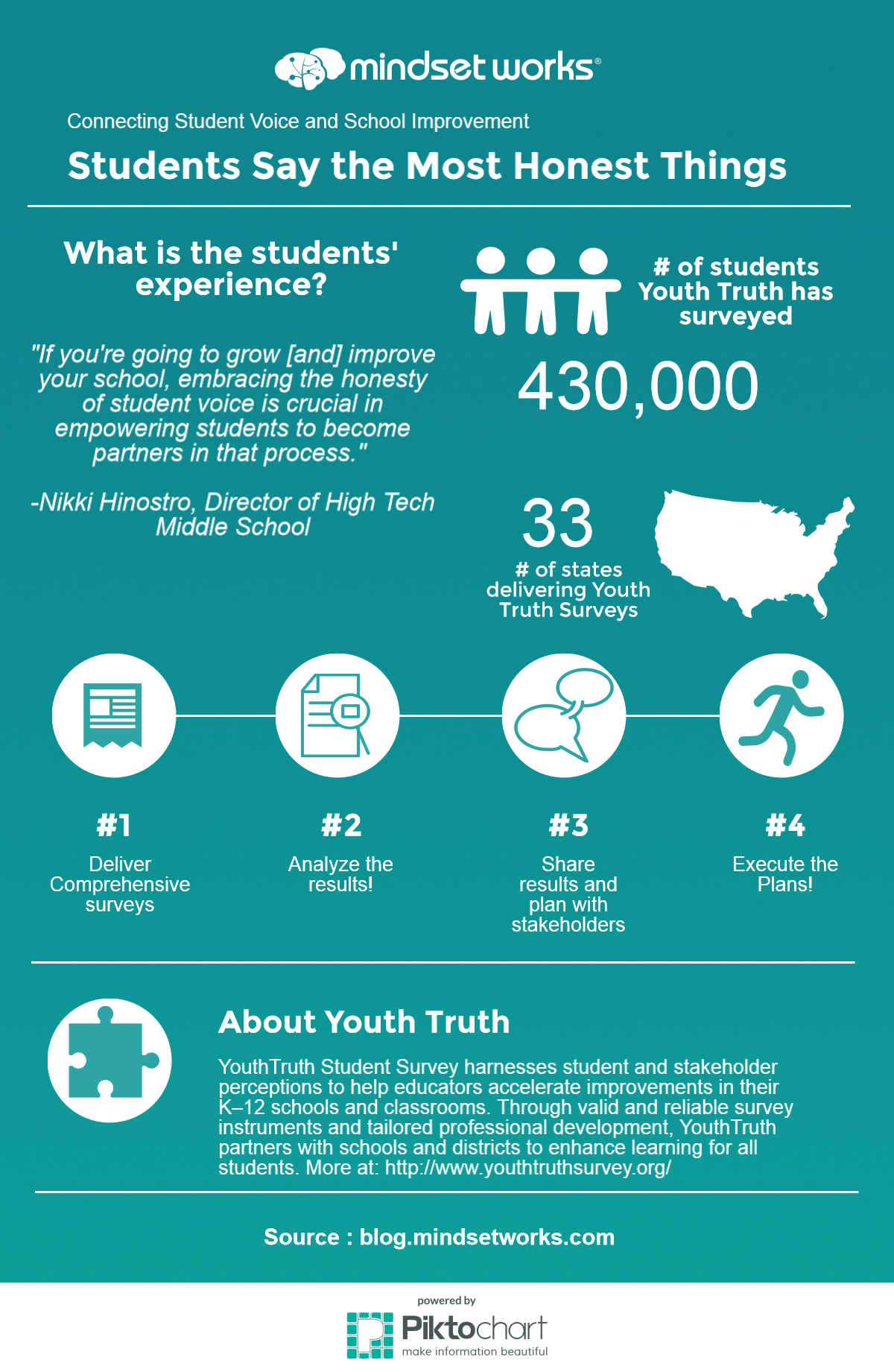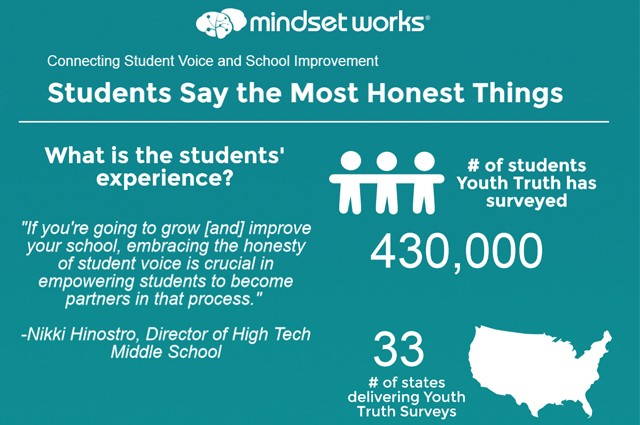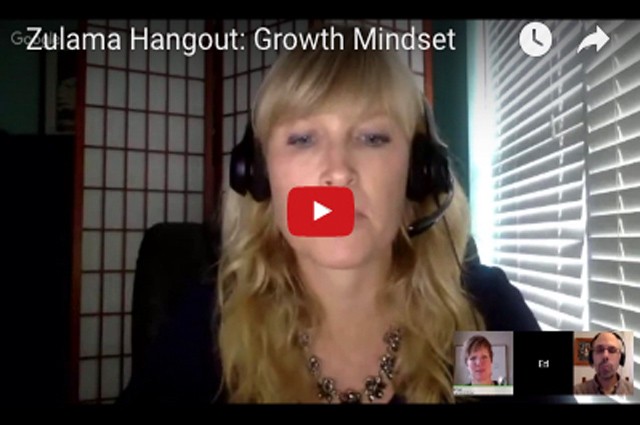"If you're going to grow [and] improve your school, embracing the honesty of student voice is crucial in empowering students to become partners in that process." -Nikki Hinostro, Director of High Tech Middle School
High Tech High's name has become synonymous with project-based learning and 21st Century Skills. The 13-school network in San Diego attracts thousands of visitors each year who come to find inspiration for their own classrooms and school models. So where does a successful school system look when its leaders want to target and prioritize areas for growth? To outside consultants? Academic researchers? Or to those who have the largest stake in school success - the students themselves?
Student feedback: the why and how
Students know great teaching and supportive culture when they feel it, and survey questions that are specific and targeted can turn their insights into action steps. High Tech High took a growth-minded approach to continuous improvement by asking students for their feedback and putting systems in place to respond to student feedback. They partnered with YouthTruth Student Survey to learn more about what their students thought and felt at school. The results of their efforts are inspiring!
According to former Secretary of Education Arne Duncan, "Students know what's working and not working in schools before anyone else." There are many ways to include students in school planning and improvement. Some districts have student representatives sit on their boards while others ask administrators to shadow a student for a day and walk in their (metaphorical) shoes. And an increasing body of research shows that student surveys are an especially reliable and effective way to include students' voices.
You can't manage what you don't measure. Surveys give school leaders a way to quantify student engagement, academic rigor, relationships with teachers and peers, and school culture. Schools can also use surveys to measure progress toward specific initiatives and goals, such as student motivation and grit, project-based learning, and STEM. Providing an anonymous venue for feedback allows students to candidly respond on topics that shape school environments.
Using Student Feedback for Change: High Tech High's Approach
Collaborating with YouthTruth allows High Tech High to identify the specific instructional areas and student demographics that have the most room for improvement.
School leaders at one network school, High Tech High International, learned from their student perception data that there was one demographic group in particular that needed extra attention: male students. It's not enough to have favorable survey results on average, which is why High Tech High's school leaders drilled down to the subgroup level to see how students of different characteristics experience the same classrooms. In doing so, Nikki Hinostro discovered that young men, particularly young men of color, felt less connected to teachers and peers than did their female counterparts. Male students responded less positively to statements like, "Most students in this school treat adults with respect" and "Most adults in this school treat students with respect."
Based on that feedback, Nikki and her team worked with their male students of color to co-create a safe space for boys to talk about issues in their lives. This formalized group, known as Boys' Group, serves as an open space for young men to come together and voice their concerns, triumphs, and experiences. Since the launch of Boys' Group, Nikki's team has seen greater equity between girls' and boys' perceptions of their relationships and engagement in school. One student, inspired by his own experience with Boys' Group, helped create and facilitate another Boys' Group for students at High Tech Middle the following school year. Other schools throughout the network have followed suit and started Boys Groups of their own as well.
Another way that schools in the High Tech High network solicit student feedback is by training students as consultants. It's not uncommon for school systems to hire external consultants to provide expertise – it's less common (and less expensive!) to train your own students as consultants. At some schools, High Tech High Student Consultants give their teachers advice on a range of topics, including student-teacher relationship building, classroom management techniques, and communication styles. This reframing of the teacher-student relationship has already begun to bear fruit, with both parties collaborating to teach and learn together. Teachers who have participated in the program have reported that they feel they have developed deeper relationships with students and interact with students in a more positive way during class.
Is your student feedback gathering dust on a shelf?
YouthTruth has some advice for other schools interested in surveying their students: If you took the time to conduct a student survey, make sure that you use the results! It helps if your survey results are ready in a timely manner, already analyzed, and easy to interpret and understand. You'll gain additional insights and value by disaggregating by demographics like race, gender, and socioeconomic status. If you can view your data in a comparative context – by comparing your school to other schools in your district or schools that share your characteristics – you'll be able to understand what typical feedback looks like and where your school sits compared to others.
As you reflect on your goals for student learning, remember that student perceptions are a leading indicator of academic achievement. While feedback can spark difficult conversations, there are resources to help. In fact, here are some handy tips that YouthTruth has picked up along the way to navigate the student feedback process. When the conversations get tough, remember what brought you here: you want all students to be successful in learning and in life. A test score can't tell the difference between boredom and engagement, but student voice can.

--
High Tech High serves 5,000 students (70% students of color; 48% qualify for free or reduced lunch) in San Diego County, CA. 96% of High Tech High graduates have gone on to college, with 34% of graduates majoring in STEM (compared to 17% nationally). The network has won numerous recognitions, from facility design awards, to playing the starring role in the acclaimed documentary Most Likely to Succeed. High Tech High is also the first charter management organization to operate its own Graduate School of Education fully embedded within a K-12 learning community. All the while, High Tech High schools operate on effectively 85% of the public dollars of other California public schools.
YouthTruth Student Survey harnesses student and stakeholder perceptions to help educators accelerate improvements in their K–12 schools and classrooms. Through valid and reliable survey instruments and tailored professional development, YouthTruth partners with schools and districts to enhance learning for all students. Since 2008, YouthTruth has surveyed over 430,000 students in 33 states and four countries. Read more about why a turnaround school principal called his YouthTruth data "like bringing me water in the desert."







